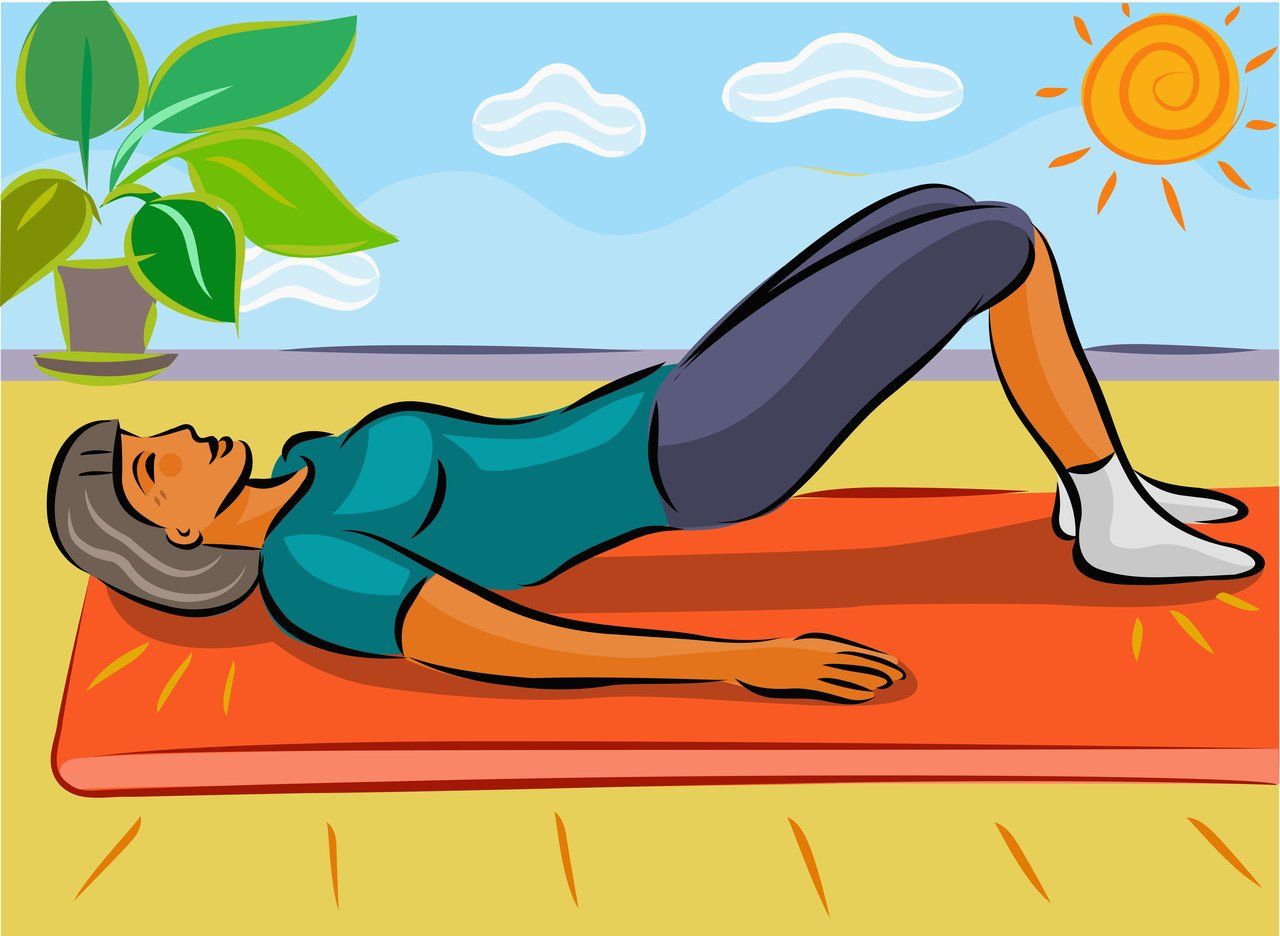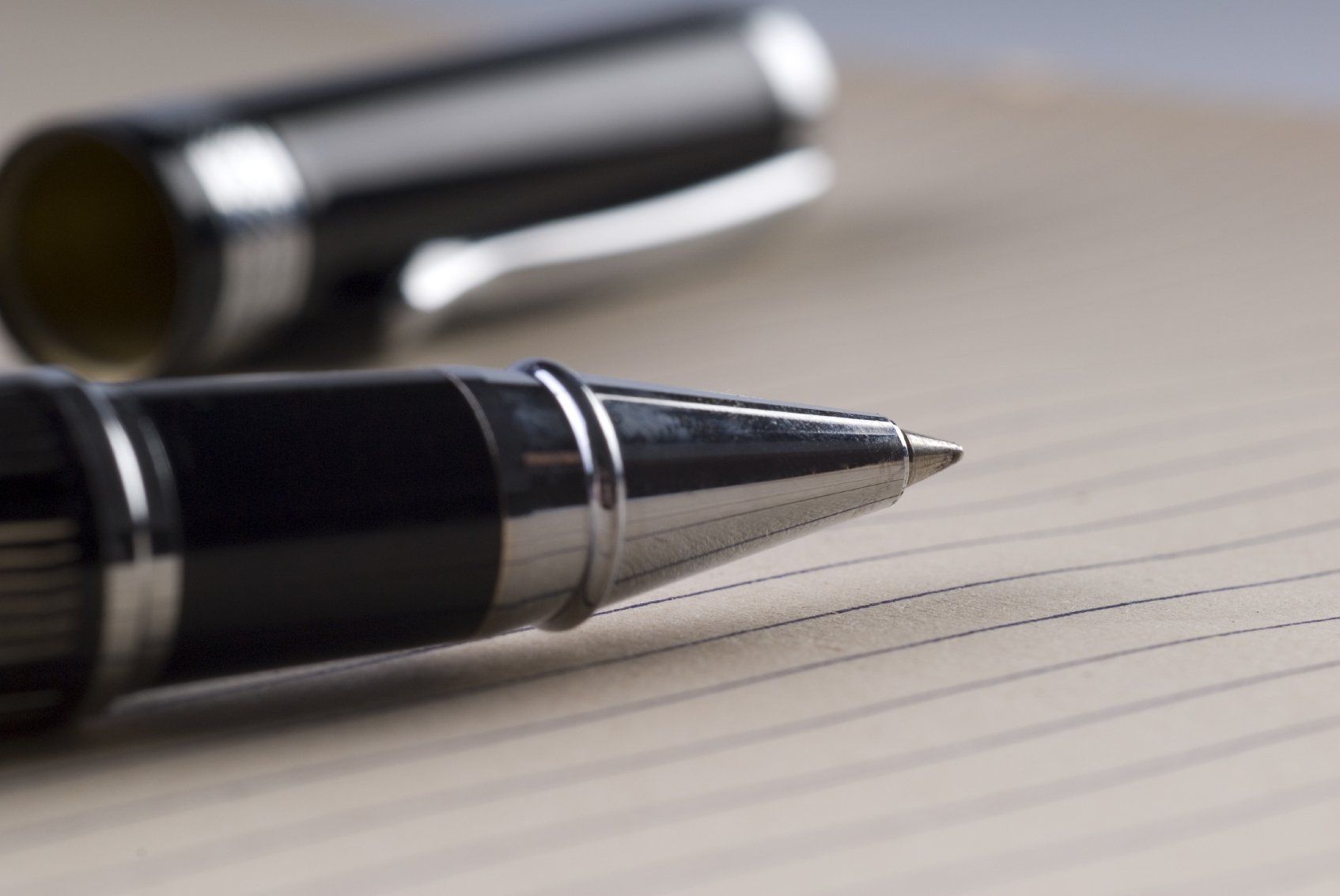Accredited Member

Since reading my last post on introducing more silence to your life you’ve developed greater creativity and concentration and are never distracted by noise, right? Don’t worry, I’m only kidding! Focusing your mind when surrounded by distraction is challenging even for the most experienced practitioners of mindfulness. But don’t fret, managing your attention is a skill that you can develop. The more aware you are of where your attention goes, the more capacity you’ll have to manage it. Once you start observing where it goes, you’ll see it moves with or without your conscious involvement. Your attention could suddenly move to how your body feels, whether happy or sad, or a raised heartbeat or the heat of a drink of tea on your tongue. Your attention might be caught by sounds in your environment, a phone ringing, typing on a keyboard, birdsong outside the window. Or your thoughts might dominate, “Can’t believe what I need to do before lunchtime” etc. Start small, focusing for a few minutes a day on where your attention goes. Ask yourself, “Where is my attention right now? On my body, the world, or my thoughts? Notice when your attention drifts and non-judgementally bring it back to being still in the present. By doing this over and over, for longer periods of time, you’ll increase your ability to direct your attention where you want it. To help bring yourself to the present moment, focus on a bodily sensation, such as breathing, or on one of your senses, such as touch, taste, sight, sound, or smell. By practicing strengthening your attention you’ll start spending more time in the present moment. This will help you become more focussed, reduce your stress levels, and improve your productivity. It’ll also help you reduce the amount of time you ruminate on past events or worry about future ones, improving your overall wellbeing. Don’t be too hard on yourself. No one can be in the present all the time. No one, not even a Zen master, can be aware of their attention all the time. Just by trying and becoming more aware of where your attention goes will create a positive shift in your life. Small steps of awareness are the key.

In my last blog post, I outlined how to find purpose and meaning in life. But with such limited time, how do we manage to follow our passions when day to day commitments get in our way? Oliver Burkeman tackles this tricky issue in his book Four Thousand Weeks . The title refers to the average length of our lives if we live eighty years. If you’re forty, you only have two thousand weeks, and if you’re sixty, one thousand weeks. Our time is finite yet many of us spend life ignoring the fact. Time management is a skill few of us master and is the best way to live life organising every minute, squeezing productivity out of every second? Burkeman, a self-declared productivity guru, admits it’s impossible to master your time and eloquently explains why you shouldn’t make it a priority anymore. By constantly trying to squeeze more into our limited time, we increase the pressure on ourselves, and often experience stress and anxiety as a result. We enjoy life less by trying to do more. The lesson here is to stop structuring your life, leave time for daydreaming, spontaneous activities and enjoying life. Everyone procrastinates, it’s a healthy part of being productive. It’s impossible to be productive every minute of the day. Procrastination helps the brain rest between tasks, just make sure that after a period of procrastination you go back to your highest priority task, and don’t try to multi-task, you’ll get less done. Do one task at a time then move onto the next. By breaking tasks down into small chunks you’ll finish things faster. With any spare time you have, don’t find a new project to do, take time to rest, reflect and reset. Do something that brings you pleasure, whether that’s a hobby, exercise, and/or spending time with loved ones. Learn to relax. Spending more time on leisure activities will boost your productivity in the long run. When working out what to spend time on, Burkeman quotes Warren Buffett, who tells a man who asks his advice to, “ make a list of the top twenty-five things he wants out of life and then to arrange them in order, from the most important to the least". The top five, Buffett says, should be those around which he organises his time…. the remaining twenty, Buffett allegedly explains, aren’t the second-tier priorities to which he should turn when he gets the chance. Far from it. In fact, they’re the ones he should actively avoid at all costs – " because they’re the ambitions insufficiently important to him to form the core of his life yet seductive enough to distract him from the ones that matter most .” Burkeman goes on to quote Elizabeth Gilbert, “ You need to learn how to start saying no to things you do want to do, with the recognition that you have only one life .” That is the real challenge. Leaning to say no to things we don’t want to do can often be hard enough. Coaching can help you work out your priorities and in learning to say no. In the meantime, I highly recommend reading Burkeman’s book, it definitely changed my life! For a link to Four Thousand Weeks, check out my resources page .

Do you find yourself stuck in a rut? Bored of your life. Waking up each day thinking ‘same old, same old?’ Sometimes life can feel like a treadmill, doing the same things in the same order, day in day out. I often hear clients speak like this when they’re middle aged, doing the same job for several years, when weighed down by caring responsibilities. And sometimes I hear it from young people, teenagers who feel lost, not sure what to do and overwhelmed by choice. Frozen by the pressure of having to choose a ‘career’. So how do you reignite the passion in your life or find it in the first place? Victor Frankl, the psychiatrist and Holocaust survivor who wrote the brilliant book, Man’s Search for Meaning wrote “ Those who have a ‘why’ to live, can bear with almost any ‘how’ .” So how do you find your why? How do you feel motivated, with a sense of purpose? I run a workshop called ‘Rediscovering Your Purpose’ which over the course of three hours, enables participants to explore what excites them, helps clarify goals and create an action plan. One exercise that focuses the mind on what we want to achieve, is to write what you’d love to hear someone say about you – either once you have died, or as if they were giving you a lifetime achievement award. If this appeals to you, take ten minutes to write the obituary or the speech, putting all modesty aside. It’s amazing how this exercise distils what’s really important and what you’d like to be remembered for. I also get people to complete Adam Leipzig’s, ‘How to know your life purpose in 5 minutes’ exercise, based on his 2013 TEDx talk. Leipzig is an American film producer, responsible for Dead Poets Society and March of the Penguins. Take fifteen minutes, three minutes per question, to answer the following: 1. Who am I? 2. What do I do (what do I love to do)? 3. Who do I do it for? 4. What do they want or need? 5. What happens for these people, how do they change, as a result? Meaning in life comes from how our actions impact others. By supporting others, we bring out the best in ourselves, which motivates and inspires us. If you want to delve deeper in this topic, check out the Victor Frankl link on my resources page , to a four minute video on how to find your true purpose. Read Frankl’s book, Man’s Search for Meaning and if you want to do my workshop, check my events page. If no upcoming Rediscovering Your Purpose workshop is listed, get in touch to be put on the waiting list.

How many of us think of how we breathe? For most, it is an automatic bodily function, without breathing we’d die, right? But did you know that how you breathe can affect your health? Western medicine treats breathing problems with medications and surgical options, but little time is given to teaching people how to breathe well. Breathing provides our cells with oxygen, vital for unlocking our body’s energy, it also regulates the nervous system and can be used to reduce stress. Modern life, the way we work, sit, eat, and live has a negative impact on the muscles, bones, and tissues responsible for bringing air into our bodies but we can reverse this trend by relearning proper breathing techniques. We can increase our blood flow, stretch our lungs, open our airways, and even balance our moods. James Nestor, a science journalist, explores this topic in depth in his book, Breath . A highly accessible and informative read, it will change the way you breathe, (and no, I’m not receiving any commission for saying this). Inspired by free divers who trained their bodies to go without air for over 10 minutes and his own breathing problems, Nestor conducted his own breathing experiment and summarises fascinating research on the subject. Through no fault of our own, due to evolutionary process, humans have the most poorly designed breathing organs in the animal kingdom. There is a tendency to breathe through our mouths and take too much oxygen in at once, throwing our systems into imbalance. Nestor’s own experiment saw him blocking up his nostrils and breathing solely through his mouth for 20 days. As a result, researchers found his blood pressure skyrocketed, his sleep apnoea worsened, and a sinus infection developed. He also felt awful, “ The nagging fatigue, irritation, testiness, and anxiety, ” Nestor writes. “ The horrid breath and constant bathroom breaks. The spaciness, stares, and stomach-aches. It was awful. ” Breathing through your mouth is a backup, not meant to be used as the default. Once he returned to breathing through his nose, everything went back to normal, plus he stopped snoring, and he improved his athletic performance by 10%. When we breathe, we tend to focus on the inhale, but it’s the breathing out that allows our lungs and bodies to take advantage of the inhale. As Nestor writes, “ Most of us engage only a fraction of our total lung capacity with each breath requiring us to do more and get less. ” To correct this, focus on extending your exhale before launching into your next inhale. Nestor says he treats breath work like a good stretch: something to do to recalibrate normal after a long period sitting or feeling stressed. " It requires no batteries, Wi-Fi, headgear, or smartphones, " Nestor writes. " It costs nothing, takes little time and effort, and you can do it wherever you are, whenever you need ." For a simple breathing exercise to practice longer inhale and exhales, why not try the 365-breathing technique? You’ll find a link to the practice on my resources page – where you’ll also find a link to Nestor’s book. I highly recommend it.

Do you find yourself in a state of quiet contentment when piecing together a jigsaw? Or perhaps whilst painting a picture, or mid flow whilst composing a story? Mihaly Csikszentmihalyi (pronounced Mee-HAH-ee CHEEK-sehnt-mee-hah-yee) is a Hungarian-American psychologist who has conducted extensive research into happiness and creativity. He developed the concept of psychological flow, also known as ‘creative flow’, that wonderful state when ideas come easily, when focus is sustained, and concentration and productivity is at its peak. In his TED talk of 2004, (seen by over 7 million people), he explains how this state of flow is the secret to happiness. Through his childhood experience of observing adults in wartime he decided to study what made people happy. Previous research has shown that 30% of the US population describe themselves as very happy consistently throughout time, despite the growth in income. Once people have minimum needs met, income and material resources doesn’t seem to affect how happy people are. Mihaly started to research artists as many of them saw little economic return for their efforts yet still felt contented with their lives. What he found was that when artists create something new, they experience a type of ecstasy, their physical existence feels as if it disappears, as their level of focus and concentration is so great. When in the creative flow everything came automatically as if they were on automatic pilot. Mihaly also worked with ethical business leaders who felt the same, those who defined success as contributing something worthwhile to the world whilst being happy doing it. Through his research of interviewing thousands of people from CEOs to shepherds, he defined flow’s seven conditions: 1. Completely involved in what we’re doing – focused, concentrated. 2. A sense of ecstasy – of being outside everyday reality. 3. Great inner clarity – knowing what needs to be done, and how well we are doing. 4. Knowing that the activity is doable – that our skills are adequate to the task. 5. A sense of serenity – no worries about oneself, and a feeling of growing beyond the boundaries of the ego. 6. Timelessness – thoroughly focused on the present, hours seem to pass by in minutes. 7. Intrinsic motivation – whatever produces flow becomes its own reward. Once these conditions are met, work is done for its own sake. To get to this state, the challenges and skill level of the task must be higher than average, otherwise there's a danger of boredom or apathy. If the challenges are too hard or the skill level too high, it can tip over to worry and anxiety. However, if you’re in a state of arousal , you can move yourself into flow by increasing the skill level, or if you feel in control of the activity, you can move into flow by increasing the challenge of the task. Flow is the sweet spot and unique to the individual. If you’re interested in watching the full 18-minute video see the link on my resources page. And if you’re interested in reading more about flow and how to access it, read a previous blog I’ve written, titled ‘ Getting into the Flow’.

In previous generations people were encouraged not to express their emotions. “ Boys don’t cry, ” a typical, and unhelpful refrain. Now we are encouraged to express ourselves, to “ be in touch with ourselves ”, to “ let the grief/anger/sadness ” out. Suppressed emotions have been blamed for everything from mental ill health to cancer. But being at the mercy of our emotions, overwhelmed by fear, sadness, or anger, isn’t helpful either. It's important to feel what we're feeling, take note of it, but not to be consumed by it or react blindly because of it. So, how do we compose ourselves when flooded by emotion? The inspirational psychiatrist, Viktor Frankl, author of Man’s Search for Meaning , (read it if you get the chance, it’s a great book) said, “ Between stimulus and response there is a space. In that space lies our freedom to choose our response. In our response lies our growth and our freedom .” The STOPP exercise is a CBT (cognitive behavioural therapy) technique that is based on that moment of space and can be incredibly effective when needing to take control of your emotions. To practice, go through the following steps: STOP! Just pause for a moment. TAKE A BREATH Notice your breathing: in through the nose, out through the mouth. OBSERVE What thoughts are going through your mind right now? Where is your focus? What are you reacting to? What sensations do you notice in your body? PULL BACK - PUT IN SOME PERSPECTIVE What's the bigger picture? Take the helicopter view. What would a trusted friend say to me right now? Is this thought a fact or opinion? How important is this? How important will it be in 6 months’ time? It will pass. PRACTISE WHAT WORKS - PROCEED What is the best thing to do right now? What is the most helpful thing for me, for others, for the situation? What can I do that fits with my values? Where can I focus my attention right now? Do what will be effective and appropriate. If you think this technique could help you, you can also download a STOPP app from Google Play/Windows Store/iTunes Store. You can also download a free handout of the technique from my resources page .

It’s no secret that looking after your body can help your wellbeing. For thousands of years people have turned to yoga to maintain flexibility, restore calm and keep their bodies toned. But did you know that embodied yoga poses could help with your creativity and encourage better self-care, confidence, and assertiveness? Embodiment in psychotherapy is the practice of using the body as a tool for healing through self-awareness, mindfulness, connection, self-regulation, finding balance and creating self-acceptance. I use embodiment in my coaching practice to enable clients to ‘bypass’ their mind, to really feel what is happening to them via their bodies. By working with the body, as well as the mind, the impact of our coaching work can be stronger, last longer, and have more impact. For, as the latest neuroscience research states, our bodies and what they experience, directly influences what happens in the brain. By listening to the body, we can change how we think and feel. Likewise, by practicing embodiment techniques, we can affect our creativity and wellbeing. The people behind Embodied Yoga Principles have taken this research and knowledge and adapted yoga poses to support personal development. By combining elements of life coaching, body therapy, dance, mindfulness-based practices, they have created a set of postures and exercises to explore and develop the body as a way of being. Just like the politician who is taught to stand with their feet wide and their chest out to inwardly feel and outwardly convey confidence, embodied yoga postures start from the belief that what you practice physically will change how you feel. Their ’No’ posture is one I use a lot with clients. (If you have trouble saying no, see my previous post on ‘ The importance of saying No’ ) Practiced for a few minutes daily, it can really help build your assertion skills and create that ‘muscle memory’ for when you need you need to say no to someone/something. For a demonstration of coaching an artist around the No posture see this 11 minute video or if you want something shorter, here’s a 3 minute video. Another useful position I find myself referring people to use is the ‘Self-care pose’ for when you’re feeling overwhelmed, or self-judgemental. It’s a great one when you’ being hard on yourself. And for those wanting to increase their creativity, they have an ‘Inspiration pose’ and for those that lack confidence, a ‘ Take the space’ pose. If you feel you could benefit from any of these poses, watch the videos carefully, take your time to practice the pose initially, really exploring how you feel as you stand in the posture. Then, take a few minutes to practice it each morning. Do this for a couple of weeks and see how the pose can help you with your life. I had a client who despite getting interviews, having the experience required, was failing to secure a new job. I encouraged her to practice the ‘Take the space’ pose for a few weeks. This she did, and even practiced it in the toilets just before the interview took place. She reported back that it had greatly improved her confidence and meant she walked into the interview with a bounce in her step. She got the job. Body language not only changes how we feel about ourselves but how others see us. So, if any of this resonates with you, why not check out the Embodied Yoga Principles website? You’ll find a link to them on my resources page .

One of the most common issues I come across when coaching people who are overwhelmed, is their difficulty in saying “No.” They don’t want to let people down, they don’t want to seem confrontational, they feel guilty if they say no, they want to prove themselves good workers, colleagues, friends, and family members. Sound familiar? Saying no is increasingly difficult as technology means we have 24-hour access to work emails and communication with friends and family. It’s difficult to be unavailable when we have a mobile phone constantly by our side. But time is a finite resource. And our energy is not unlimited. If we don’t say no, we’ll soon find we have no time for the stuff we want to say yes to. Often, we say yes to things we don’t want to do because it feels good in the moment. It avoids social confrontation, it makes us look good, and we have the best intentions. But then, as our tasks pile up, it leads us to resent others, fractures relationships and impacts our health. Tasks take away our time and that means less time for things that give your life meaning. It’s why lifelong people-pleasers feel unfulfilled. It’s why those that always say yes, are busy but not productive, and why even if they don’t admit it, they will feel angry, resentful, and anxious. If you constantly overcommit, inevitably you’ll let people down, and then others will stop trusting you. Our ability to say no depends on past experiences and whether we’re stuck in our child or parent ego state. For more information on this and a deeper look at the importance of saying no, see this article , which I’m summarising here. (There’s also a link to it on my resources page ). Fortunately, due to the neuroplasticity of our brains, we can reshape what we believe and change our behaviours. So how do you say ‘No’ without being rude or feeling guilty? Ensure you’re saying ‘no’ from your adult ego state, saying ‘no’ in the present as an equal to the person you are saying it to. Not slipping into the child ego state who is seeking approval from their parent or being in the parent ego state, trying to rescue the world. Create new neural pathways by repeating small behaviours over time. Changing isn’t easy so use the following strategies to help: 1. Plan ahead. Say no by text and email if that’s easier at first. Say you will get back to them if saying no outright feels too difficult. Then afterwards, politely decline. 2. Keep it simple . Don’t offer a justification. It might feel polite to do so, but it will encourage the person hearing the no to challenge your decision or suggest another time. 3. Be aware of ego states and remain in your adult ego state . Simple transactions are complementary and mutually beneficial, ulterior transactions are more complex and when the psychological message is different to the social message. These transactions can feel emotional and exhausting as you constantly have to decode the message underneath. 4. Propose an alternative – if you’d like to. If you want to say yes, but can’t, say no with an alternative. Make sure the alternatives are manageable. E.g., “Can you help me organise mum’s birthday party?”, “Sorry, I’ve got too much on, but I can order the cake.” If you’re not sure if you should say yes or no, think, If I had to do this today, would I agree to it? If the answer is no, then that’s your decision. At some point the task will come to the top of your to-do list, if you don’t want it there, don’t accept it. The more you say no, the more time you have to say yes to the things that matter to you. What would you prefer, a life of things you want to say yes to, or a life full of things you don’t want to do? For a deeper look into this issue, read the article mentioned above.

When we’re stuck in a rut, we often feel bored with our life. Maybe we’ve been doing the same job for too long, we’re no longer challenging ourselves, a little too comfortable in our comfort zone. Life has become routine and sometimes this can lead to feeling our life lacks meaning. Sometimes a life once full of meaning can become confusing and senseless because of traumatic events. So, how do we get that sense of meaning back? Most psychologists agree that there are three parts to feeling we live a meaningful life: 1. Feeling our life makes sense. 2. Having clear long-term goals and a sense of purpose. 3. A belief that your actions matter to others. You can encourage the above by talking through things with a friend, therapist, or coach, and do more for others via your family, your community or through work. But there’s also another way. Joshua Hicks, an existential psychologist, proposed a fourth way to develop meaning in life, by appreciating and finding value in experiences. He calls this “experiential appreciation” (EA). He designed a series of studies to measure experiential appreciation and how that impacted on perceptions of meaning in life (MIL). What he found was: • Appreciating the little things in life affects how we feel about life, in a positive way. For example, those who watched a short sequence of nature footage from Planet Earth reported greater feelings of experiential appreciation that those who watched a brief instructional wood-working video, which in turn, increased their meaning in life judgements. • While some people were more naturally inclined to recognise beauty , anyone can develop this skill by slowing down and engaging in mindful appreciation of the little things around them. This act, of being more mindful of our environment , helps us cultivate a more meaningful existence. For more detail on Hicks’ studies conducted see the full articl e. Victor Frankl, an Austrian neurologist and psychiatrist as well as a Holocaust survivor, wrote the inspirational, Man’s Search for Meaning . In this fantastic book, in which he outlines his experience of surviving the most traumatic experiences imaginable, he explains how finding our true purpose and supporting others to find theirs, can bring out the best in people. This is consistent with Hicks’ findings, that by appreciating one’s experiences can develop a rich sense of meaning and shore up confidence that life has been and will be worth living. On my resources page , you’ll find a link to a four minute video of Victor Frankl summarising his views which I’d highly recommend watching and, if you have the time, read his book, it’s short but extremely powerful. In the meantime, what small things will you appreciate today?

We hear a lot about mindfulness being good for us. It’s taught in school to children, there are mindful writing/art/dance/craft workshops and I’m constantly writing newsletters encouraging you to be mindful. But what exactly is mindfulness? Being mindful is being aware of what is happening in your head at any given moment without being carried away by your thoughts, being aware of your immediate surroundings and being present in the current moment. This is very helpful, for when something makes us angry, such as someone barging in before us when we’re queuing, our thoughts of being angry can make us feel angry. There's no buffer between the stimulus and our reaction. With just a bit of mindfulness training, we can increase the space between the stimulus and the response, giving us the chance to respond differently. For example, the person barges in front of us, we are angry about this, but instead of becoming angry, we could notice how our body feels. How our heartbeat increases, how our fists tighten. We notice our reactions but that doesn’t mean we have to react on them. Instead, with time, we might think why the person might be doing this, maybe they’re in a hurry, maybe they’re having a bad day, maybe they have a good reason. Or maybe they don’t and they’re not thinking of anyone but themselves, but is it worth getting angry about? It's not that there's never a reason to get angry, or that by practicing mindfulness you will turn into a lifeless, non-judgemental blob, it’s just that with mindfulness you learn how to respond wisely to things that happen to you rather than reacting blindly. And that is why mindfulness is a superpower. So, if you want to be more mindful, less reactive, get more time to think before you react, the best way is practice meditation or, if meditation isn’t for you, practice mindful activities where you're totally absorbed in what you’re doing. Mindfulness isn’t going to make you into a Buddhist monk overnight, but it will help with your stress, anxiety, and emotional regulation and that’s a great superpower to have. If you want to see this blog as an animation, check out this link , to see the animation that inspired this piece.












